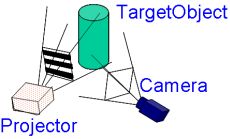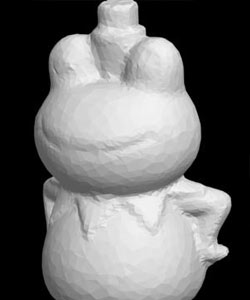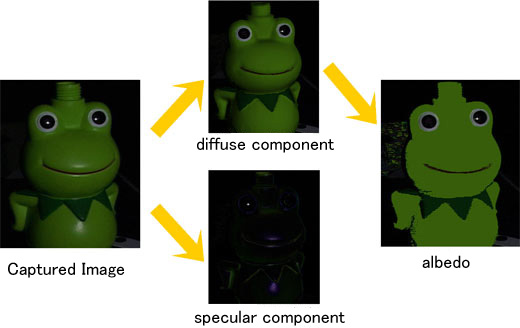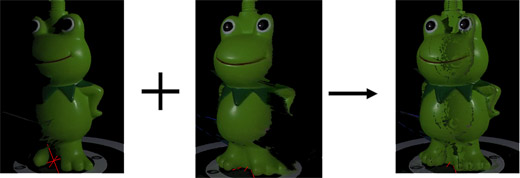In making digital archives of images and their contents,
the demand for photorealistic 3D models built using real objects or photographs is growing.
3D modeling consists of two parts : geometric modeling and
reflectance modeling.
We introduce our research about the automation of the geometric,
and reflectance modeling in this research area.
Geometric and Reflectance modeling
We use a 3D measurement system which consists of a camera and projector.
Using the systems, color images and range images can be obtained.
By using the images, we can estimate the object's albedo precisely.
The 3D measurement system:
We use
the 3D measurement system that is developed in our laboratry
.
Multiple images are taken as the object is rotating on a special rotation table.
The images are then automaticaly aligned to contruct the entire shape
using LED markers on the rotation table.

The 3D measurement system
|

The captured color images
|

The obtained 3D data by measurement
|
problem:
simple integration of textures resulted in discontinuities between textures.
solution:Removing highlight and shading effects & alpha blending
Removing highlight and shading effects
We estimate Lambertian parameters using geometric and color information

Alpha blending
When only using diffuse parameters ,
discontinuities may occur when integrating textures because of the
influence of the estimation errors.
To reduce these discontinuities , we blend textures using weighted alpha values
that we set small at the 3D edges.

|
Result of Integration
Publications
|







